The Alarmers and 100 Club Share a Common Purpose
By M.A. Cashman, PhD.
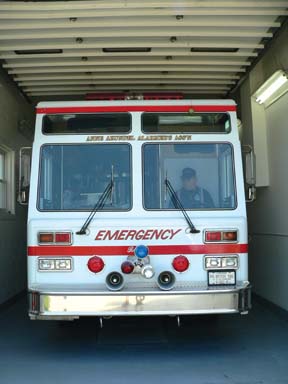
Many young boys are drawn to their local firehouses, inspired by the heroic figures of uniformed firemen and impressed by the vehicles and equipment used to save lives and property. These boys find the fire house an exciting place where they can get close to the vehicles: massive, brightly-painted hook and ladder trucks, pumpers, ambulances and chief’s cars, all equipped with flashing lights and sirens. It is where they can get to know the equipment handled by the firemen: the helmet, the boots, the hose, and the fire ax. And it is the place where they hear alarms dispatching the location and severity of each fire. They come to know the signal for firemen to get into protective gear and climb on the fire trucks, some jumping up from their duties, and others from their cots to slide down brass poles. While some grow up to be firemen, most of these young boys grow up to pursue other lines of work, with fond memories of their days at the local firehouse.
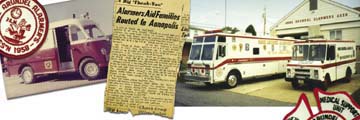 Al Brandt was one of the young boys who stayed connected to his local firehouse. Referring to himself as a “fire buff,” Brandt served the cause of fire safety by co-founding the Anne Arundel County Alarmers; then he realized his dream of sustaining the families of fallen heroes – fire, police, and emergency personnel – by founding The One Hundred Club of Anne Arundel County. Al Brandt was one of the young boys who stayed connected to his local firehouse. Referring to himself as a “fire buff,” Brandt served the cause of fire safety by co-founding the Anne Arundel County Alarmers; then he realized his dream of sustaining the families of fallen heroes – fire, police, and emergency personnel – by founding The One Hundred Club of Anne Arundel County.
As a young man in Glen Burnie, Brandt was well acquainted with the Westport Fire Department in Ferndale, on the line between the county and Baltimore city. As a teenager, he was a volunteer fireman. Then in 1958, while at a meeting of the Kiwanis in Glen Burnie (he is a past-president), he got the news of the great A&P fire.
“It was a cold February; the firemen were trying to carry coffee. So a group of us started a coffee wagon service like Box 414 that they started after Baltimore burned down in 1900. We recruited and went on with the plan. Then my brother Wilbur heard that an area bakery was selling old trucks. So we bought one, cut a hole in the side, and put in shelves for the coffee urns.
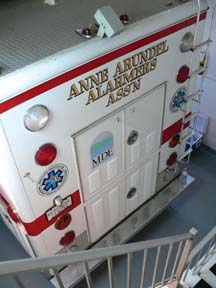 Painted it red and white, put a red light on the top. Then we bought an old school bus, re-painted it, and a contractor named John Hruska put in the electrical. There was an old, dilapidated grocery store in the neighborhood; bought it, renovated it, put the bus inside because on cold mornings, had to get it started. After we renovated the building, the roof fell in, so we started fresh. Hruska got a lot of stuff donated. We used chipped bricks that were being thrown away. Hruska knew everyone. For fundraisers, we bought apples from WV and sold them, had bull roasts, sold Christmas trees. Hruska talked big and thought big. It was his idea to buy a truckload of trees. So four or five of us backed a loan from the bank, we got the trees, sold them, and made as much as $20,000 year. Three years ago we bought a bus for $300,000.” Painted it red and white, put a red light on the top. Then we bought an old school bus, re-painted it, and a contractor named John Hruska put in the electrical. There was an old, dilapidated grocery store in the neighborhood; bought it, renovated it, put the bus inside because on cold mornings, had to get it started. After we renovated the building, the roof fell in, so we started fresh. Hruska got a lot of stuff donated. We used chipped bricks that were being thrown away. Hruska knew everyone. For fundraisers, we bought apples from WV and sold them, had bull roasts, sold Christmas trees. Hruska talked big and thought big. It was his idea to buy a truckload of trees. So four or five of us backed a loan from the bank, we got the trees, sold them, and made as much as $20,000 year. Three years ago we bought a bus for $300,000.”
Brandt was able to attract volunteers to this cause. As co-founder, he recalls, “We were the Alarmers, a fire buff unit, but we would not respond unless the county dispatched the alarm, and the County liked us. We were like an arm of the fire department. On all big alarms – county, fire and police, roadblocks and hostage situations -- our rehabilitation unit was there with donuts, cans of soup, chili, and a grill for hamburgers and hotdogs. Today the departments are well organized to keep fires down. The Alarmers still respond a lot; go out on chemical leak situations. Wilbur and I attended a Volunteer Fire Department meeting where, as President of the Alarmers, I was inducted into the Fire Department Hall of Fame.”
According to Brandt, “Hruska was a real fire buff; he used to travel the US promoting fire safety. He knew about the One Hundred Club of Cook County (Chicago) and got the idea of starting one in Anne Arundel County.”
The first One Hundred Club began in 1952 when Detroit businessman Bill Packer invited 100 of his friends and associates to help the family of a slain police officer. While vacationing in Florida, Packer influenced many to start clubs, including Ralph J. Schew who began a club in Chicago, The One Hundred Club of Cook County. Hruska and Brandt were inspired by the Cook County club, but while dreaming of starting a club in Maryland, Hruska passed away and the idea was dropped.
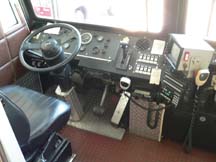 Brandt began re-focusing on starting a OHC in 1998 when he was admitted to the shock trauma center of the University of Maryland in Baltimore for major heart surgery. He awoke three days later, thinking to himself, “Suddenly the Lord spared you. . . for something. Then I talked to my wife and son and sent out letters early in 1999.” Brandt began re-focusing on starting a OHC in 1998 when he was admitted to the shock trauma center of the University of Maryland in Baltimore for major heart surgery. He awoke three days later, thinking to himself, “Suddenly the Lord spared you. . . for something. Then I talked to my wife and son and sent out letters early in 1999.”
The letter Brandt sent to area businesspeople was straightforward and friendly: “Come over and give us a little help.” When “Cookie” Kiser got a letter, she offered to hold the first meeting at her City Line Diner. They prepared food for 100 people and 30 attended. But their commitment to the cause was sufficient to launch the new organization, with strong support from the governor, Chiefs of the County Fire and Police Departments, and members of Brandt’s family, especially his wife Marilyn, a persistent fundraiser, and son Barry, a club officer.
Brandt was Chairman, local banker Henry Hein was Chairman of the Finance Committee, and Kiser handled Development and Public Relations. Brandt did not want to run the organization. So he was looking for someone to take on that role, when Kiser introduced Pete Shaeffer to the cause. In Shaeffer, Brandt saw an idealist, a young man who was curious and eager. So he invited him to be President before he reviewed his impressive resume of community service and a keen ability to raise and manage funds. Shaeffer and his wife Ginny are lifelong Marylanders. Following in the footsteps of his father, one of the founders of T. Rowe Price, Shaeffer is an investment advisor, Senior VP at RBC Dain Rauscher, and founder of Shaeffer Investment Consulting Group. In taking on the role of president, he recalls, “Cookie skillfully blended me into the organization. You know, Al is a Tom Sawyer kind of guy. He gets interested in something and gets a lot of people to help.”
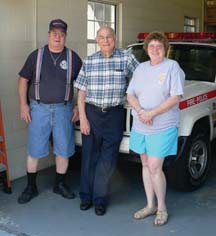 By August of 2000, the Articles of Incorporation and the By-Laws were approved; application filed for recognition of exemption, 501C(3) of the Internal Revenue Code was granted that October. The One Hundred Club of Anne Arundel County (OHC) is unique because it is the only one in the State of Maryland. According to Kiser, “Some states have yet to form such clubs.” At the OHC national convention in 2002, Kiser discovered where most of the clubs are located. Currently, states with the most clubsinclude TX (18), NJ (17) and FL (15). Numbers do not tell the whole story, however. While the IL has just 8 clubs, the One Hundred Club of Cook County is the model that caught the attention of Hruska in the 1970s because of its size, endowment, and benefits for surviving families. By August of 2000, the Articles of Incorporation and the By-Laws were approved; application filed for recognition of exemption, 501C(3) of the Internal Revenue Code was granted that October. The One Hundred Club of Anne Arundel County (OHC) is unique because it is the only one in the State of Maryland. According to Kiser, “Some states have yet to form such clubs.” At the OHC national convention in 2002, Kiser discovered where most of the clubs are located. Currently, states with the most clubsinclude TX (18), NJ (17) and FL (15). Numbers do not tell the whole story, however. While the IL has just 8 clubs, the One Hundred Club of Cook County is the model that caught the attention of Hruska in the 1970s because of its size, endowment, and benefits for surviving families.
Using that model, our club serves the families of those police and fire personnel responsible for public safety: “The mission of the OHC, a private entity, is ‘to provide supplemental benefits to families of firefighters, law enforcement officers ad emergency medical service personnel who lose their lives in the line of duty in Anne Arundel County. Within 24 hours of a crisis, the OHC will help the family with a check to help pay for immediate, necessary expenses and will assist in paying outstanding bills.” Shaeffer anticipates future needs, when he comments, “As assets continue to grow, we hope to be in a position to help pay home mortgages and assist in children’s educational expenses.”
Under Shaeffer’s leadership, membership has grown to approximately 129 individuals, four corporations, 22 families, 22 small businesses, 17 lifetime members, one foundation, and one volunteer grant. In describing club goals, “Since 2000, endowment has gone from zero to approximately a quarter of a million dollars,” Shaeffer takes this view of the future: “My guess is that in order to deal with potential situations of multiple fatalities, we need at least one million.”
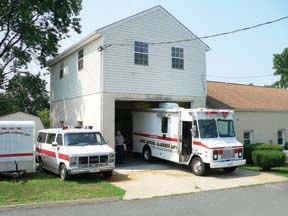 Funds supporting OHC come from membership dues and fundraisers such as the Awards Banquet, an annual spring event since 2002. Al Brandt is now Honorary Chairman, his son Barry is Second Vice President. While the goal of the club is to make money and hope it never has to be spent, there has been one fatality in the line of duty in Anne Arundel County. In 2005 Officer Duke G. Aaron, Maryland Transportation Authority (MdTA), was killed in the line of duty. In his honor, a Memorial Assistant Fund was created for an annual scholarship. The 2006 recipient, Cpl Bryant Oden (MdTA), a student at Johns Hopkins University, is pursuing his Master’s degree in Police Executive Leadership. Funds supporting OHC come from membership dues and fundraisers such as the Awards Banquet, an annual spring event since 2002. Al Brandt is now Honorary Chairman, his son Barry is Second Vice President. While the goal of the club is to make money and hope it never has to be spent, there has been one fatality in the line of duty in Anne Arundel County. In 2005 Officer Duke G. Aaron, Maryland Transportation Authority (MdTA), was killed in the line of duty. In his honor, a Memorial Assistant Fund was created for an annual scholarship. The 2006 recipient, Cpl Bryant Oden (MdTA), a student at Johns Hopkins University, is pursuing his Master’s degree in Police Executive Leadership.
Those interested in giving back to the families of our fallen heroes by joining the OHC, are invited to fill out an application online. With the founding of the first OHC in our county, the cause that inspired Brandt as a young boy now belongs to all of us.
Back
|

